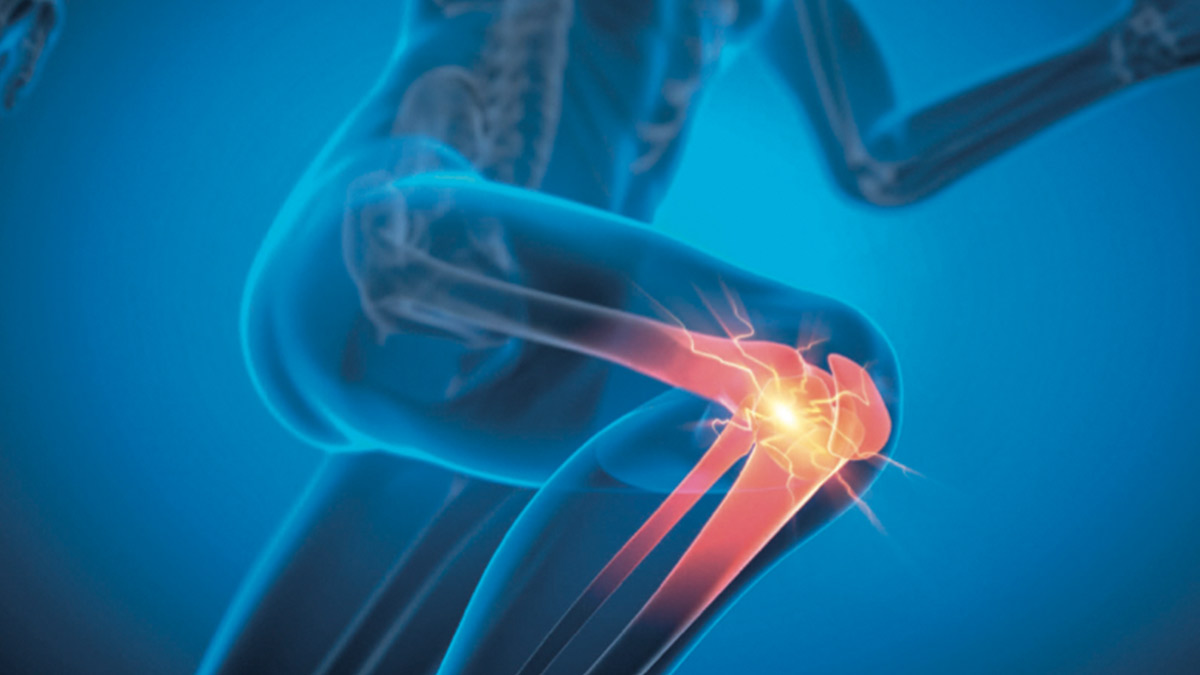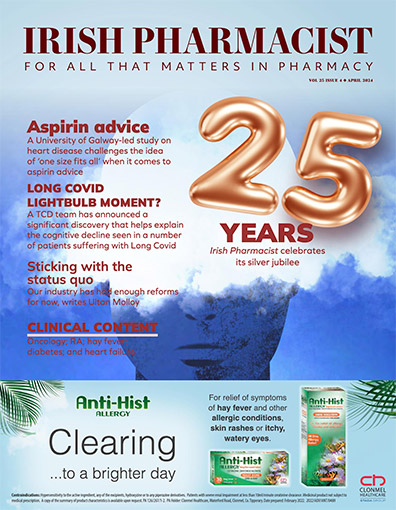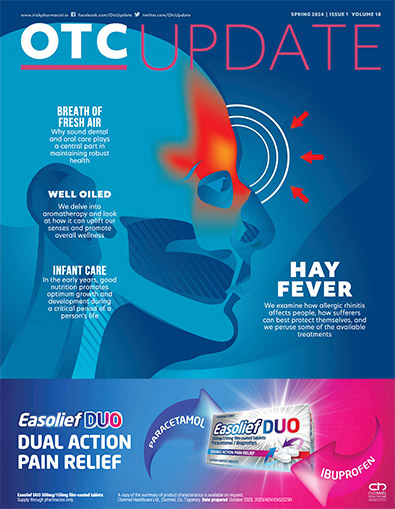Nadira Callachand MPSI provides a clinical overview of the multifactorial considerations of the characteristics of IBD and IBS
I
nflammatory bowel disease (IBD) and irritable bowel syndrome (IBS) are two terms that are often confused among members of the public. IBD and IBS are two distinct gastrointestinal (GI) disorders. Although there may be some overlap in symptoms, the pathophysiology and treatments between the two are completely different.
IBS
IBS, the most commonly-diagnosed gastrointestinal condition, can affect up to one-in-five people at some point in their lives.1 This could be an underestimation of the condition, as it is thought that many suffering with IBS do not seek medical attention. The condition can have a significant impact on a patient’s quality of life and their emotional wellbeing. IBS is classified as a functional GI disorder, which means that it is not associated with any structural or biochemical abnormalities in the GI tract.2
IBS is defined by the presence of abdominal pain or discomfort. Bowel habits are disturbed, with diarrhoea and constipation presenting alone or in combination. Women have been shown to more commonly report abdominal pain and constipation, and men more commonly reporting diarrhoea.2 The disorder is usually life-long, with patients suffering episodic relapses. IBS subtypes are used to describe predominant symptoms:
· IBS with diarrhoea: IBS-D.
· IBS with constipation: IBS-C.
· IBS with mixed bowel pattern: IBS-M.2
The pathophysiology of IBS is not completely understood. It is thought that a number of factors may contribute to development of the disorder, including genetic, intestinal permeability, alterations in intestinal flora, abnormal GI motility and inflammation. Symptoms of IBS include loose/frequent stools, constipation, bloating, and abdominal pain/cramps. Patients may notice symptoms following the intake of specific foods or that symptoms, such as stool consistency or pain location, change over time. Patients may also present with headache, lethargy, nausea, bladder symptoms or faecal incontinence. The Rome III criteria can be used to diagnose IBS when the presence of organic disease such as IBD, colon cancer and coeliac disease have been excluded. The diagnostic tool assesses if the patient has experienced the following:
Recurrent abdominal pain or discomfort at least three days per month in the last three months associated with two or more of the following:
· Improvement with defecation.
· Onset associated with a change in frequency of stool.
· Onset associated with a change in form (appearance) of stool.4
A stool assessment may also be carried out using the Bristol Stool Form Scale — this allows patients to score stool appearance from 1 (hard and lumpy), to 7 (entirely liquid).2
There is no definitive treatment for the management of IBS. A combination of lifestyle and dietary advice and use of pharmacological therapies is often required. Symptom-based treatment has been the traditional method of managing IBS. The removal of factors which are known by the patient to exacerbate these symptoms, ie, medication, stress or certain food, may help to alleviate symptoms. A variety of non-pharmacological treatments are recommended for those with IBS. Regular exercise of 30 minutes at least five days a week and the avoidance of trigger foods (ie, caffeine, alcohol, carbonated drinks) is simple advice that can be effective at helping to keep bowels moving and avoid unnecessary discomfort. Meals should be balanced and at taken at regular intervals.
Other strategies that still require further research include the use of probiotics and fibre supplements. Evidence for probiotics use is promising, but clarity of efficacy of specific strains still needs to be established. Fibre supplements (ie, ispaghula) may be of benefit for those who suffer from symptoms of constipation, although for patients, it may be as useful to take soluble fibre in their diet, such as oats.
Pharmacological management of IBS is centred on treatments that alleviate symptoms of IBS but are not specifically authorised for IBS itself (ie, laxatives, antidiarrhoeals and certain antispasmodics). Treatments include:
Laxatives — osmotic laxatives (ie, polyethylene glycol) are often recommended first-line to improve constipation for those with IBS-C, however they have not been shown to improve abdominal pain or bloating. Stimulant laxatives may also be used. Lactulose is not recommended, as it can increase gas production and exacerbate symptoms.2
Anti-diarrrhoeals — first-line for IBS-D is loperamide, which inhibits peristalsis, prolongs gut transit and reduces faecal volume. As constipation is an adverse effect, it should be used with caution for patients with IBS-M.
Antispasmodics — antimuscarinics (ie, hyoscine butylbromide) and smooth muscle relaxants (ie, alverine, mebeverine, peppermint oil) are thought to improve symptoms of abdominal pain by relaxing smooth muscle. They have been shown to provide short-term relief of symptoms.
Antidepressants — those with moderate-to-severe IBS may benefit from antidepressants such as tricyclic antidepressant (TCA) and serotonin reuptake inhibitors (SSRIs) to improve pain perception, mood and motility. A second-line option and an unlicensed indication, TCAs can improve symptoms of abdominal pain and diarrhoea and SSRIs can improve abdominal pain and constipation. Amitriptyline may be used at doses of 10-to-30mg at night but the risk of anticholinergic adverse effects (dry mouth, dizziness, blurred vision, sedation, and constipation) and prolongation of QT intervals limits their use.4
IBD
IBD is thought to affect up to 40,000 people in Ireland.5 ‘IBD’ is the term used to describe the inflammatory disorders of the gastrointestinal tract, the two most common being Crohn’s disease (CD) and ulcerative colitis (UC). CD is a chronic inflammatory disease that can involve any part of the gut from the mouth to the anus, and UC is an inflammatory condition causing mucosal inflammation of the colon. The exact cause of IBD is unknown, but it is thought to be caused by genetic and environmental factors. An alteration of gut flora may be a contributing factor to development of the disease.
Typically, patients with IBD are diagnosed at between 20-to-40 years of age, although it can occur at any age.6 Patients often follow a pattern of recurrent relapses with acute exacerbations, followed by remission or less-active disease.
Quality of life can be severely affected in IBD patients. During exacerbations, patients report days of feeling worn-out, weak and tired, whilst experiencing symptoms such as GI bleeding and abdominal pain. Ninety per cent of those with IBD have been hospitalised, and over 50 per cent of patients with CD eventually require surgery.8 Productivity in IBD patients is commonly reduced, as the fluctuation of symptoms can deter people from remaining in the workforce. All of these factors mean that the economic burden of IBD is substantial.
In CD, inflammation can penetrate the entire thickness of the intestinal wall. Patients with CD typically present with abdominal pain, diarrhoea, fever and weight loss. Around a third of CD patients experience perianal disease (especially fissures and fistulas), which may be their prominent complaint.7 Those with severe disease may have frequent, debilitating periods of pain.
In UC, inflammation usually only presents in the inner lining of the intestinal wall. Symptoms vary slightly from CD, in that bleeding is usually present during bowel movements. False urges to have a bowel movement and anaemia are also typical features of UC.8
Treatment aims for IBD are to induce and maintain remission of the disease, restoring quality of life for the patient. Medication and appropriate diet are usually adequate to promote healing but in severe cases, surgery may be required. Treatment options depend on the extent and severity of disease. Multidisciplinary support should be provided to patients, with information and advice on smoking cessation, diet, fertility (5-ASA sulfasalazine may cause oligospermia (low sperm count) and reduced male fertility), and medicines adherence.
Aminosalicylates (ASA) (mesalazine, olsalazine, sulfasalazine) are used to induce and maintain remission in UC. Suppository, foam and enema preparations are useful for proctitis and left-sided disease and oral preparation when more extensive disease is present. In some cases, both oral and rectal preparations may be required. Remission may be achieved in four-to-six weeks and treatment continued indefinitely to prevent relapse.
Corticosteroids (CS) may be used for short-term treatment of UC. Rectal preparations can be used with ASA to induce remission and oral CS in severe disease — the recommended regimen is up to 40mg/day of prednisolone (or equivalent) for 10-to-14 days, reducing by 5mg/day every week to give an eight-week course.6 For mild-to-moderate CD, budesonide (9mg/day) is the recommended treatment for localised ileocaecal disease and when more widespread disease is present, concomitant administration with a CS may be required.9
Immunomodulatory agents (azathioprine or 6-mercaptopurine) are recommended for moderate-to-severe CD combined with CS when initial therapies have failed. Close monitoring for toxicity is required. Thiopurines have also been shown to be effective for moderate-to-severe UC, although their full effect can take several months to be seen. Ciclosporin is an option when a more rapid induction of remission is required, however its toxicity profile prevents it from being used as a long-term treatment.
Tumour necrosis factor alpha inhibitor (anti-TNF?) agents (infliximab, adalimumab) may be used for both UC and CD when previous treatment options have failed.
The Irish Society for Colitis and Crohn’s Disease, a patient support group, has useful information booklets on IBD and links to international information sources on IBD on its website: www.iscc.ie.







